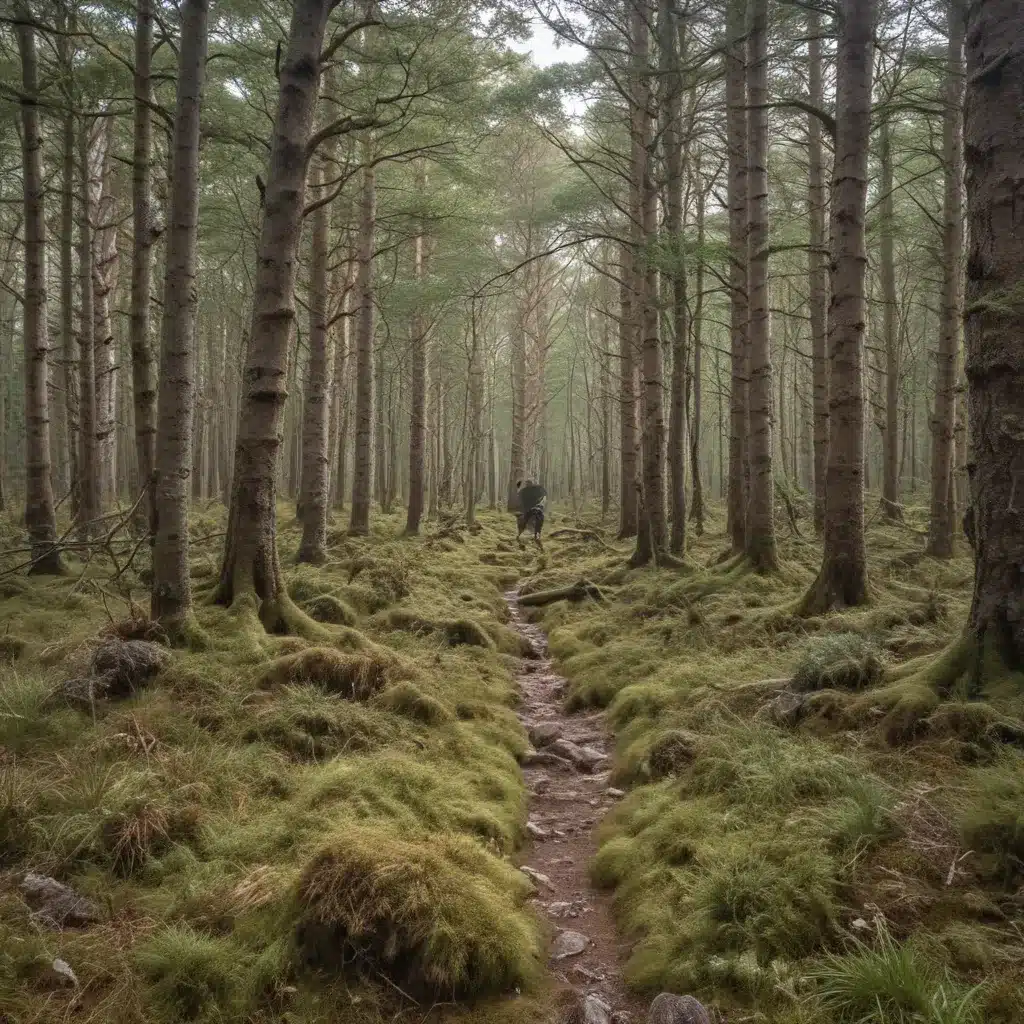
Discovering the Forgotten Realm of Scotland’s Primeval Wilderness
As I stood at the edge of the Caledonian Forest, the towering pines and gnarled oaks seemed to whisper secrets of a bygone era. This ancient woodland, once blanketing vast swathes of the Scottish Highlands, has captivated my imagination for years. And now, I finally had the chance to venture into its mysterious depths.
The Cairngorms National Park website had painted a vivid picture of this primeval landscape – a vast wilderness of Scots pine, birch, rowan, aspen and juniper, that once covered much of Scotland. Tracing its history, I learned that these forests took their name from the Romans, who referred to the region as “Caledonia” – meaning “wooded heights.”
Intrigued, I decided to delve deeper. Scouring the internet, I stumbled upon a fascinating post from Last Wolf, an adventure blogger, who shared her own journey of discovery. She had uncovered captivating details about the sheer scale of the Caledonian Forest at its peak, nearly 6,000 years ago. Apparently, it had once blanketed almost the entire northern half of Scotland – an inconceivable expanse of ancient woodland teeming with wolves, lynx, beavers, and wild boar.
The Remnants of a Vanished Wilderness
As I delved deeper into the history of this forgotten realm, I was struck by the dramatic decline the Caledonian Forest has faced over the millennia. Motorhome Escapes reported that by 1950, the forest had been reduced to a mere 1% of its original size – a tragic loss of one of Scotland’s most precious natural treasures.
Yet, even in its diminished state, the Caledonian Forest remains a sight to behold. According to the Cairngorms National Park Authority, the remaining 35 fragments of this ancient woodland are globally unique, having adapted to the harsh Scottish environment over the course of 9,000 years.
These last vestiges of the Caledonian Forest are home to some of the rarest and most fascinating wildlife in the UK. I was thrilled to learn that they shelter the elusive mountain hare, the agile pine marten, the majestic red deer, and the enigmatic Scottish wildcat. Even more intriguing were the rare breeding birds that have found refuge in these ancient woods, including the grouse, goosander, siskin, and the majestic golden eagle.
Exploring the Caledonian Forest’s Diverse Ecosystems
As I delved deeper into my research, I discovered that the Caledonian Forest is not just a haven for towering pines and hidden creatures. It is a tapestry of diverse ecosystems, each with its own unique character and charm.
For instance, the Cairngorms National Park is home to some of the best examples of Bog Woodland and Mountain Willow Scrub. The Bog Woodlands, with their sparse, stunted Scots pine and birch, co-existing alongside bogs and mires, have a primeval, otherworldly feel. Meanwhile, the Mountain Willow Scrub, found in the exposed montane zones above the treeline, supports a remarkable diversity of rare mosses, lichens, and even the netted mountain moth.
As I explored the different regions of the Caledonian Forest, I was struck by the sheer variety of landscapes and experiences on offer. From the vast, ancient pinewoods of Abernethy and Glen Tanar, to the oak and birch woods along the shores of Loch Lomond, each area seemed to offer its own unique charm and enchantment.
Restoring the Caledonian Forest’s Lost Glory
Perhaps the most inspiring aspect of my journey through the Caledonian Forest was learning about the ongoing efforts to restore and regenerate this precious natural heritage. According to Last Wolf, the replanting program has been running at an impressive 4,500 hectares per year, with the ultimate goal of increasing Scotland’s tree cover by 640,000 hectares over the next 200 years.
This ambitious initiative not only promises to revive the Caledonian Forest’s lost glory, but also to breathe new life into the local economy and biodiversity. Motorhome Escapes notes that the forests already generate over 30,000 forestry jobs, and the increased tourism would be a boon for the region.
As I stood at the edge of the Caledonian Forest, surrounded by the towering pines and the whispers of the wind, I couldn’t help but feel a deep sense of hope and excitement for the future. Perhaps one day, I might even catch a glimpse of a wolf or a lynx, as these ancient inhabitants of the forest are slowly reintroduced to their rightful home.
Until then, I’m content to continue exploring the rich tapestry of ecosystems that make up this remarkable natural wonder, marveling at the resilience and adaptability of the Caledonian Forest. And who knows, maybe on my next visit, I’ll even stumble upon a few more secrets hidden within its timeless depths.

